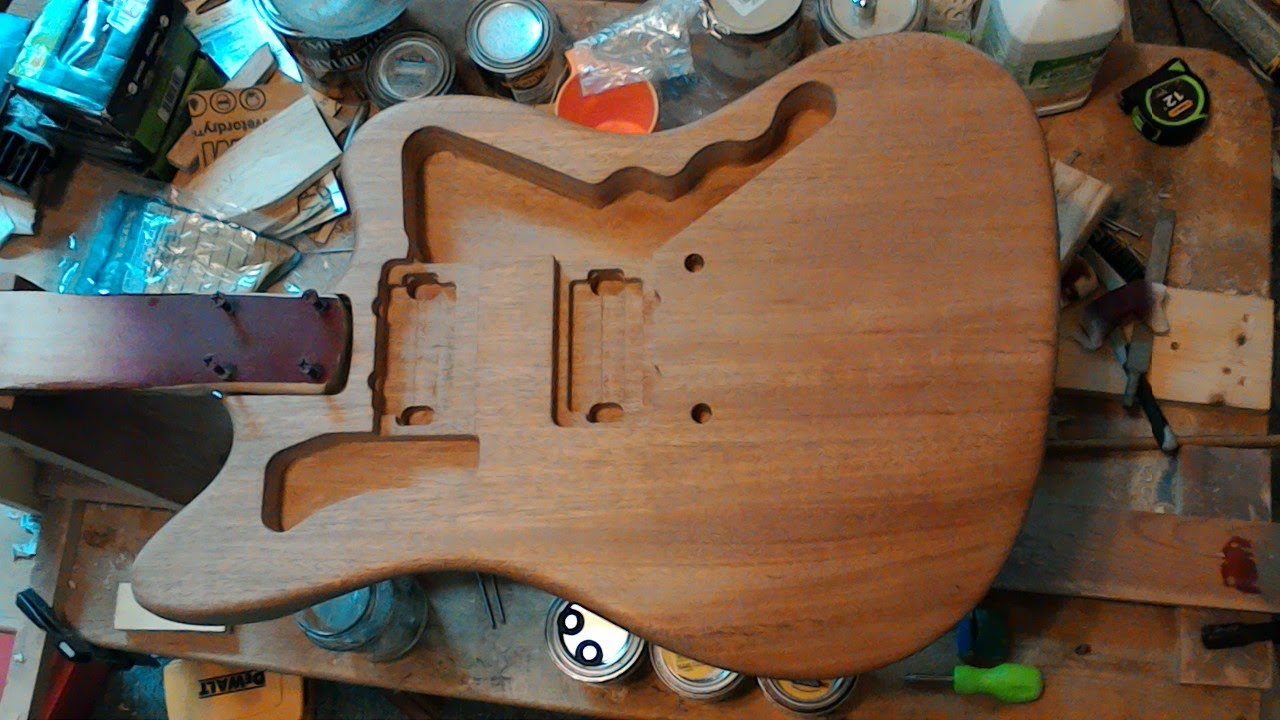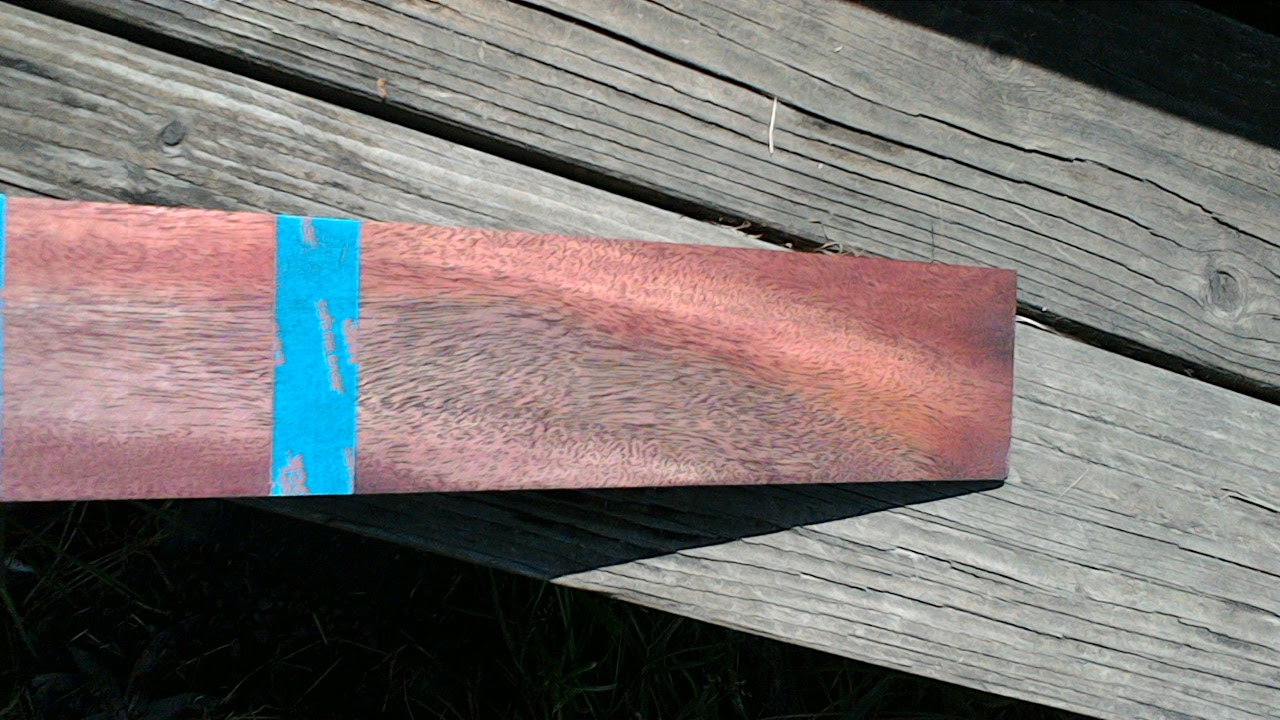Step 1, light stain to bring out any remaining scratches . . . and sand down with 220 / 320 to remove those.
 |
| Bare wood . . . |
 |
| And lightly stained . . . |
Well it'll be pretty once done . . . but there are as expected some scratches, quite a few light ones on the upper horn and some in the lower cutout round over and then at the lower back . . .
Sanded these about an hour after the last picture was taken . . . and royally clogged the sandpaper . . . and evened out the stain after with a rag with some turpentine. Surprisingly the back was - as far as I could see - clean . . . no scratches. I'll let it all dry for 48 hr or so and then go over it again, lightly with some 220 and then some 320 to smooth everything down all the way . . . maybe another light application of stain and we (well I; I don't really expect anyone to come over and 'help') can put some finish on . . .
Thinking of doing a 'raised center' - a la a firebird using some leopard wood I've found at Rockler, need to see that in person first though . . .
 |
| Leopard wood |
Or maybe something else? . . . Mahogany $11 . . . Purple Heart $20, Padauk $13, Wenge $15 . . . hmm may be a 'problem' finishing that . . . Bolivian Rosewood (Pau Ferro) $16, Zebra Wood $15, Bubinga $12 . . . might look good . . . Jobillo $12 . . . but only 3" wide so I need 2 pieces possibly . . . striking though . . .
The raised center will also reduce the - somewhat 'ugly' - 22 fret overhang at the end of the neck . . . there is a 1/4 gap there between the body and the fretboard there . . .


































